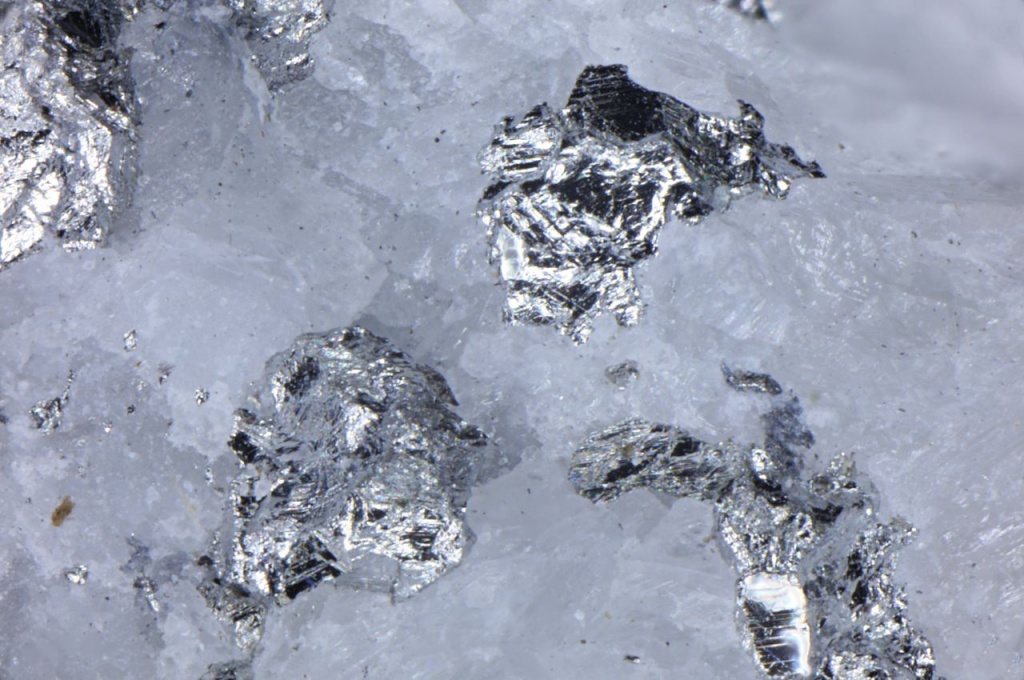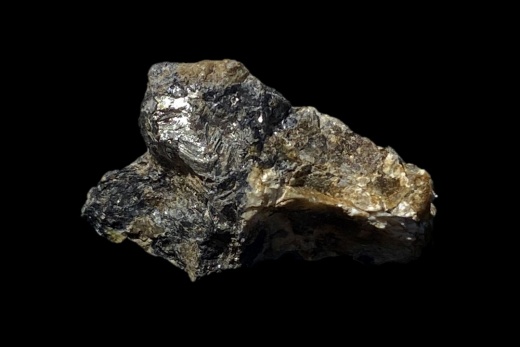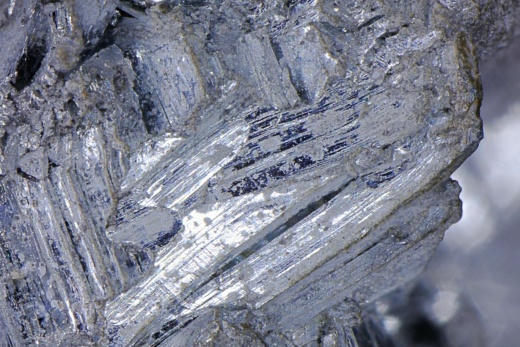Tin-white patches, some crystalline, of native antimony. Acquired from Diederik Visser. Width of view 3.5mm. Stack of 25 images.
Antimony from Lucknow is recorded in a Mining article in the Sydney Mail newspaper of 31 May, 1890. Interestingly, correspondence with William Frederick Petterd, the father of mineralogy in Tasmania, is also mentioned in the article. In fact, specimen 44 in Petterd’s collection is native antimony with gold from Lucknow! In addition, number 2812 is listed as antimony from Lucknow.
Their reporter writes:
Recently Mr. Petterd, of Launceston, applied to Mr. Newman for some specimens and particulars of the Lucknow mines, and what Mr. N. said to Mr. P. so tersely describes the lay of the country that I give it word for word:
‘No. 1 are two specimens of arsenical pyrites that would assay from 5oz. to lOOOoz. of gold and perhaps as many hundreds of silver.
No. 2 are two pieces from the Phoenix vein. They will probably go some 500 or 600 gold and 70 or 80 silver.
No. 3 is a piece of calcite showing free gold and arsenical pyrites, worth about 600 gold and 70 silver. This is from the Uncle Tom vein.
No. 4 is a piece of native antimony. I send you this on account of its uniqueness with gold generally. This occurs in bunches and forms much amalgam, and gives an equal amount of trouble; but I like to see it occasionally, believing it to be indicative of the permanency of the vein matter associated.
Our walls are serpentine and diorite, the former hanging and the latter foot. Veins start from the west in quartz, but carry nothing until they reach the contact joint of serpentine and diorite and turn into calcite; the joint runs north and. south, or thereabouts; the veins go down shortlike, with an easterly strike. Our water all comes from the top. When quartz transpires the gold does not.’
Mr. Petterd replied: ”Their examination has given me very great pleasure, combined with no small amount of information. I have made assays of three examples with wonderful results — results that in every way bear out the glowing reports that I had seen in the press from time to time. The specimens of arsenical pyrites gave the following return:
No. 1.
Fine Au., 5923oz. 18dwt 0gr.
Ag., 4l0oz. 6dwt. 10gr.
No. 2.
Fine Au., 723oz. 14dwt. 7gr.
Ag., 98oz. 4dwt. 0gr.
Your letter with so much information, about your wonderful mine was very interesting, and a large number interested in mining have carefully perused it and critically examined the specimens. We have nothing here of the same character.’
Click on the image below for a higher resolution version…



